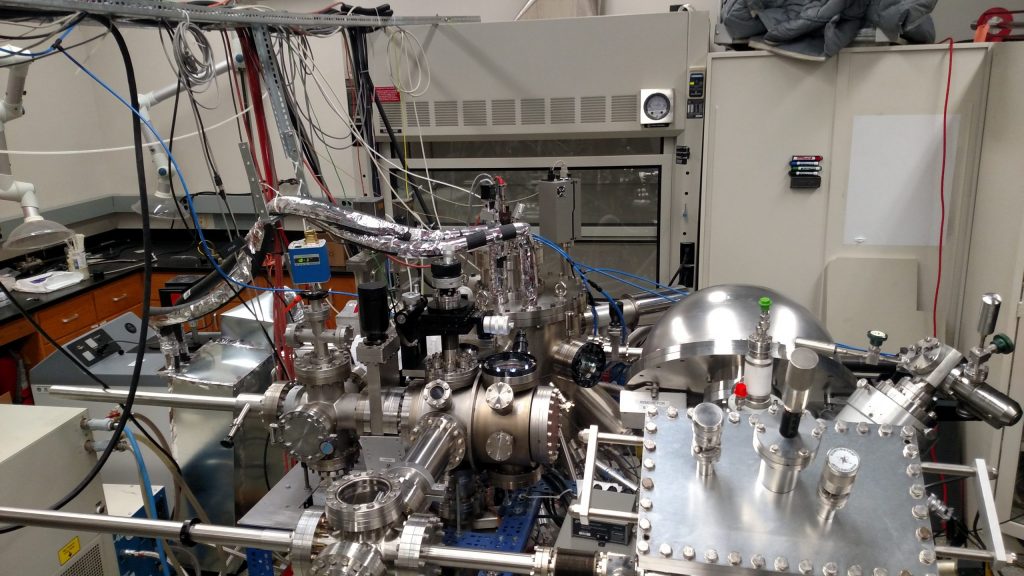Hybrid Oxide Molecular Beam Epitaxy System & X-ray Photoelectron Spectroscopy

Our oxide molecular beam epitaxy is a state-of-the-art hybrid molecular beam epitaxy system with 7 effusion cell sources for metal evaporation, 2 gas injector lines for delivery of metal-organic precursors for difficult to evaporate materials such as titanium, and an RF plasma. The system is equipped with a reflection high energy electron diffraction (RHEED) gun for in situ monitoring during the growth process, a quartz crystal rate monitor for calibration, and an ultra-high vacuum load-lock transfer chamber for sample transfer to an appended X-ray photoelectron spectroscopy system.
Our PHI 5400 monochromatic XPS has been attached to our MBE since May 2018 during installation and complete our laboratory construction. We are the only university in the United States with a combination of hybrid oxide molecular beam epitaxy and in situ x-ray photoelectron spectroscopy.
The system is equipped with an Al/Mg dual anode source and an Al Ka monochromatic x-ray source. A sputter ion gun is available for Ar surface sputtering and He ion scattering for ion scattering spectroscopy of surface termination.
X-ray Diffractometer

A new Rigaku SmartLab X-ray diffraction system was installed in the Chemistry building in Feb 2021 through a recently-awarded National Science Foundation Major Research Instrumentation grant. This system will allow us to perform high-resolution measurements of epitaxial films via X-ray reflectometry, out-of-plane scans, and reciprocal space maps (RSM). It is equipped with a 2D area detector for rapid acquisition of RSM data and powder scans.
Physical Property Measurement System

We share access to a Quantum Design PPMS with Profs. Peng Li and Mike Hamilton in the Department of Electrical and Computer Engineering. The system is equipped with vibrating sample magnetometry (VSM), electrical transport, and other attachments for temperature and field-dependent characterization down to 1.4 K and up to 7 Tesla. You can learn more here .
Rutherford Back Scattering
We are fortunate to have access to an ion accelerator just a few steps from our lab in Leach, which allows us to measure film stoichiometry quickly and easily for the films that we grow. The accelerator is also capable of ion implantation, which opens up new possibilities for experiments doping our films.
Atomic Force Microscope

The condensed matter physics group in the Department of Physics shares use of a Park Systems XE-7 atomic force microscope. The system has ~1 Å vertical resolution and is capable of resolving atomic step terraces on single crystal films and substrates. It is also capable of performing various scanning probe measurements such as conductance mapping.